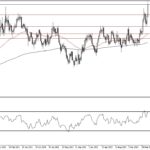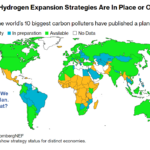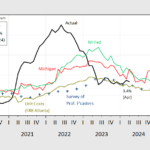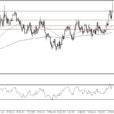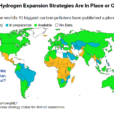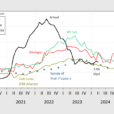

Okay, I have to discuss something this week that has been bugging me. I have had several emails as of late suggesting one of the biggest investing fallacies stated during late stage bull market advances.
“I don’t care about the price, I bought it for the yield.”
First of all, let’s clear up something.
Company ABC is priced at $20/share and pays $1/share in a dividend each year. The dividend yield is 5% which is calculated by dividing the $1 cash dividend into the price of the underlying stock.
Here is the important point. You do NOT receive a “yield.”
What you DO receive is the $1/share in cash paid out each year.
Yield is simply a mathematical calculation.
The distinction will become important in just a moment. But first, I need to touch on one of the primary issues currently being ignored by the markets which is the inherent risk of mean reversions.
Mean reversions are one of the most powerful forces in the financial markets as, like gravity, moving averages provide the gravitational forces around which prices oscillate. The chart below shows the long-term view of the S&P 500 as related to its long-term 6-year moving average.

Not surprisingly, when prices deviate too far from their underlying moving average (2-standard deviations from the mean) there is generally a reversion back to the mean, or worse.
As you will notice, the bear markets in 2000 and 2007 were not just reversions to the mean, but rather a massive reversion to 2-standard deviations below the mean. Like stretching a rubber band as far as possible in one direction, the snapback resulted in devastating bear markets.
While these bear markets did result in subsequent bull markets, as they should, at the peak of each cycle it was believed that somehow “this time was different.” As discussed previously, the current bull market, which is also believed to be different, is likely not given the lack of economic dynamics required to foster an extended secular period.
The chart below brings this idea of reversion into a bit clearer focus. I have overlaid the 3-year average annual real return of the S&P 500 against the inflation-adjusted price index itself.

Historically, we find that when price extensions have exceeded a 12% deviation from the 3-year average return of the index, the majority of the market cycle had been completed. Following the large spike in 3-year annualized returns in 2014, returns have begun to revert and will likely continue to do so into the next bear market cycle.
While this analysis does NOT mean the market is set to crash, it does suggest that a reversion in returns is likely. Unfortunately, a historical reversion in returns has often coincided, at some juncture, with a rather sharp decline in prices.



